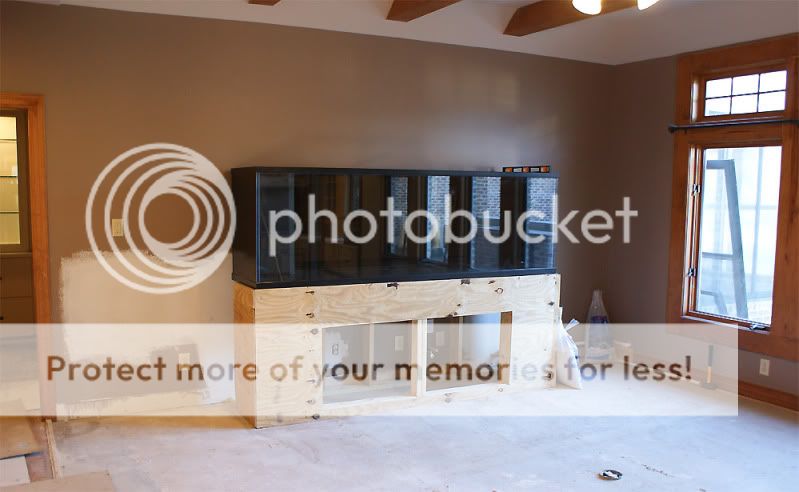I'm getting ready to make a stand for a 300 I am buffing out. Tank is 96x24x30. Top of the stand will be 4x 2x4s with 3/4 plywood on the top and bottom of those (almost like a torsion table). One 4x4 in each corner, a 2x4 (maybe 2x6) rim around the bottom, and a diagonal or two in the back, possibly one on the side. I do not want a center support column for a variety of reasons.
The questions I have:
I'm in a nearly 95 year old house and I know my floor isn't level (still figuring out how much). It's entirely possible that there is a full inch drop from the back right corner to the front left corner. The floor is wood, and leveling it in advance is not an option. I'll be adding a couple columns under the tank before I fill it, so I'm not worried about much movement after I get it set up. Do I:
1) Make the stand for that location, understanding that it isn't going to be square.
2) Make it square, and shim it to level (Don't want to dent the floor at the shim locations though).
3) Deal with it being off level.
4) Other (suggest).
I do plan to skin the frame with something like 1/4" ply with a nicer veneer, but I may be able to hide some difference in height with the top and bottom trim.
Also, any thoughts about the bottom rectangle of the frame being 2x4 vs 2x6?
The questions I have:
I'm in a nearly 95 year old house and I know my floor isn't level (still figuring out how much). It's entirely possible that there is a full inch drop from the back right corner to the front left corner. The floor is wood, and leveling it in advance is not an option. I'll be adding a couple columns under the tank before I fill it, so I'm not worried about much movement after I get it set up. Do I:
1) Make the stand for that location, understanding that it isn't going to be square.
2) Make it square, and shim it to level (Don't want to dent the floor at the shim locations though).
3) Deal with it being off level.
4) Other (suggest).
I do plan to skin the frame with something like 1/4" ply with a nicer veneer, but I may be able to hide some difference in height with the top and bottom trim.
Also, any thoughts about the bottom rectangle of the frame being 2x4 vs 2x6?










